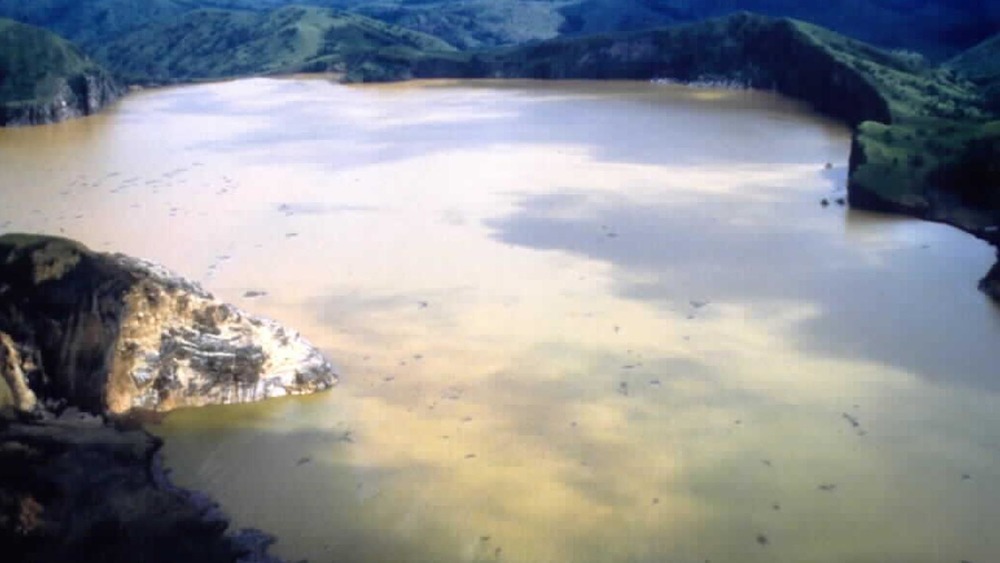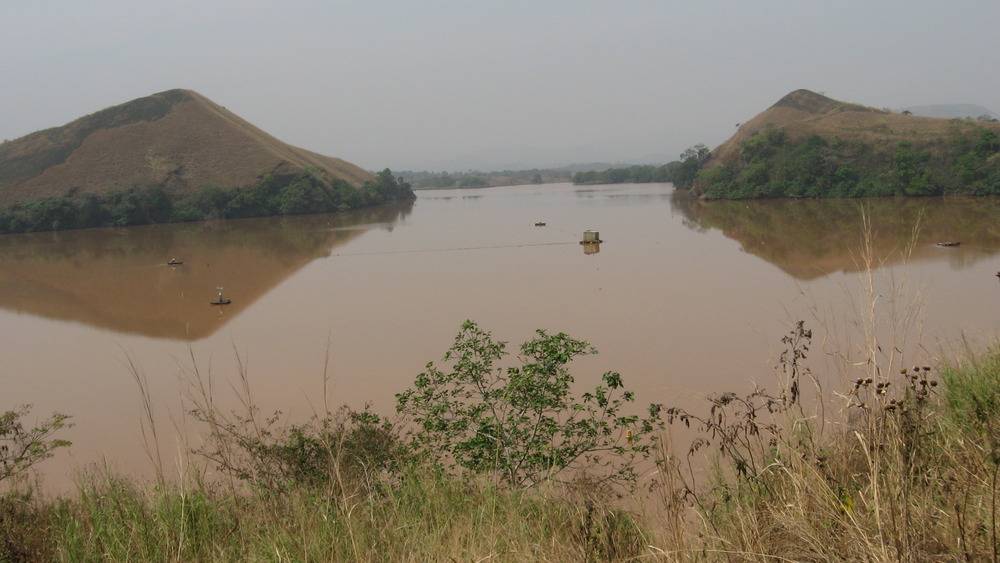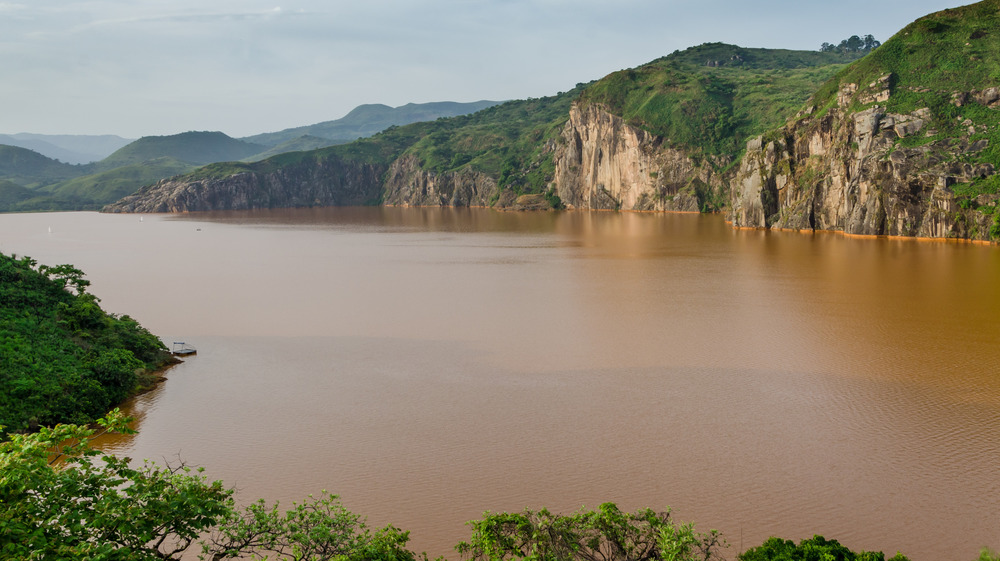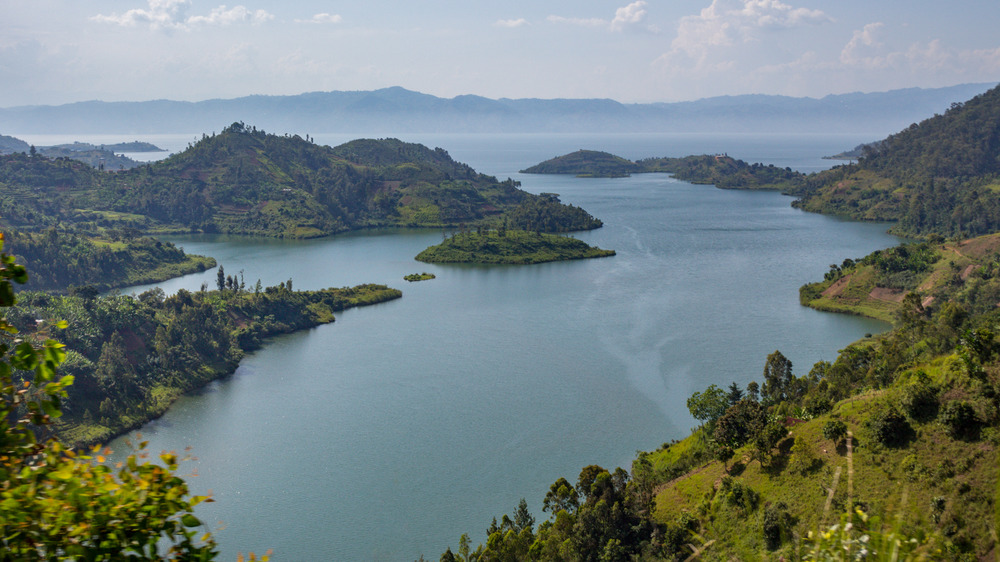The Crazy True Story Of Exploding Lakes
As unlikely as it sounds, there are a few instances where lakes have been known to naturally explode. Known as a limnic eruption, it's so rare that there are only two confirmed incidents in the world because they require such a special set of circumstances.
Unfortunately, despite being exceptionally rare, they are also incredibly deadly. Limnic eruptions release a toxic and invisible cloud of CO2, sometimes with some other deadly chemicals mixed in, that kills almost everything in its path. In the event that methane is also released into the air, there's also a risk of ignition, though not spontaneously.
Currently, there are several projects working to extract the deadly gases from the lake and transform them into an energy supply. KivuWatt, a methane extraction program, is hoping to produce over 100 megawatts of power over the upcoming years. Despite these efforts to reduce the risk of exploding lakes, scientists still aren't exactly sure what causes limnic explosions, much less how to prevent them entirely. This is the crazy true story of exploding lakes.
How exactly does a lake explode?
As said, limnic eruptions are so singular that there are only two recorded incidents in history. While these explosions are related to volcanic explosions, they don't necessarily coincide with one. What essentially happens is that carbon dioxide (CO2) builds up in the bottom of the lake "from underlying magma reservoirs."
According to the Journal of Limnology, an external trigger, "possibly related to uncommon weather conditions, volcanic-seismic activity, or landslides" causes an invisible, but enormous, cloud of CO2. Since CO2 is heavier than air, the gas cloud travels through low-lying areas, causing those in its path to suffocate. However, the exact cause of limnic eruptions still isn't entirely understood. What's more, there's no warning sound other than a loud boom that occurs when the gas erupts from the lake. Some survivors have also reported a "strange smell," which is thought to be related to volcanic fumes such as sulfur.
The first recorded limnic eruption occurred on August 15, 1984, at Lake Monoun in Cameroon. Tragically, 37 people were killed along with countless animals. Around the eastern edge of the lake, the vegetation was flattened for over 100 yards, which meant that the eruption likely caused a 30-foot tsunami. Victims were both burned and asphyxiated, suggesting that there may have been some hydrochloric acid mixed in with the CO2. Hanging upwards of 10 feet off the ground, the gas cloud reportedly took almost four hours to fully dissipate.
The eruption of Lake Nyos in 1986
Two years later, almost to the day, there was another devastating explosion in Cameroon. On August 12, 1986, a limnic eruption at Lake Nyos resulted in the deaths of over 1,700 people and 3,500 livestock when a cloud of 1.6 million tonnes, roughly 0.2 cubic miles, traveled into the surrounding valleys. This time, the clear cloud of gas reached almost 160 feet high.
According to YUP, the eruption's gas cloud contained almost 6-8% CO2, while a normal amount in the atmosphere is 0.04%. These toxic levels caused almost "immediate loss of consciousness and death." Only those at higher altitude were able to survive. There was even a report of a group of people who survived on the second level of a bus.
Since it takes an incredibly particular set of circumstances to invoke a limnic eruption, they are considered unique to these two Cameroonian lakes. Both lakes lie atop a large magma chamber, and because they are so deep there's "sufficient water pressure to hold the gases at the bottom." And since the climate is consistently tropical, gases aren't able to release slowly the way they do when temperatures change with the seasons.
Concerns for Lake Kivu exploding one day
For many scientists, Lake Kivu, which lies at the border between Rwanda and the Democratic Republic of the Congo, is also cause for concern. According to Knowable, while 14,000 people lived around Lake Nyos at the time of the eruption, over two million people live near Lake Kivu as of 2020.
And the concern isn't theoretical. There's evidence that between 3,500 and 5,000 years ago Lake Livu experienced a limnic eruption and other more recent ones are also thought to have occurred. It's also believed that Lake Nyos has the potential to erupt again.
But measures are being put into place to prevent limnic eruptions. According to YUP, in order to "slowly de-gas" the lakes, vent pipes are being installed into the lakes. For every liter of water pumped out almost ten liters of CO2 are released as well. This system is currently in use at Lake Nyos. However, some wonder whether or not this could itself trigger an explosion.



